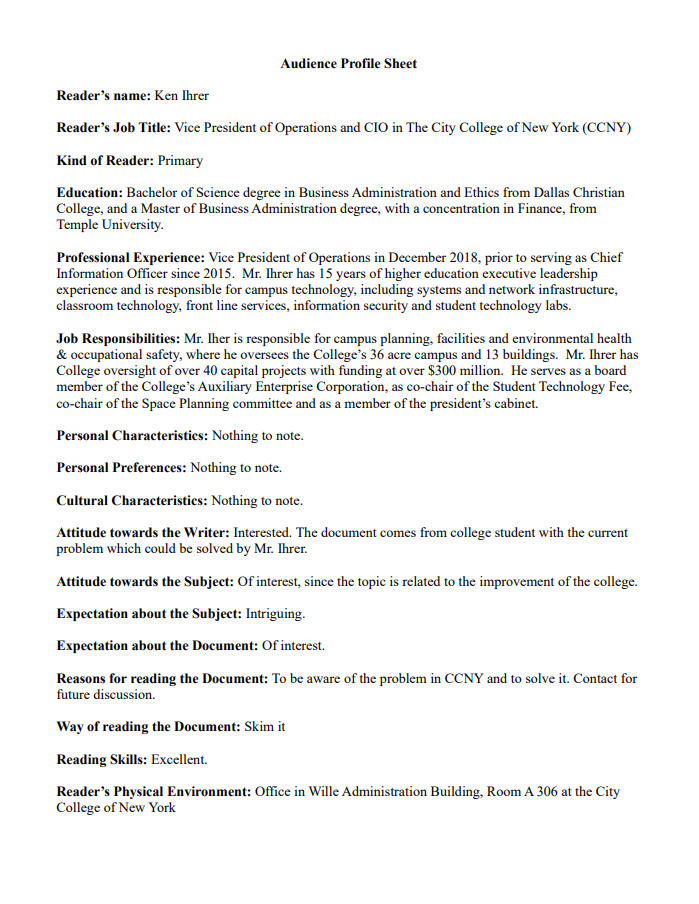At first glance, audience is someone who reads the paper or listens to the oral presentation, or receives an information from the author in any other way. But during this course I have learned that audience is deeper and wider. Audience is almost the first thing author should understand when starting the project. Author should make some research and think about what his audience will be. If the author knows his audience well, he will manage to give them the information more clearly and more persuasive. Author needs to “speak the same language” with his audience. Otherwise, if the author won’t bother and won’t care about his audience, people most likely would not understand all of the author’s thoughts and his project will look weak and not interesting from their point of view.
For example, during the Memo assignment I wrote about the Wi-Fi problems on campus at City College of New York. For this specific problem it is unreasonable to send this memo to someone who is unrelated to this problem and will not have interest in it. After some research I have found my audience: Vice President of Operations and CIO in The City College of New York, Ken Ihrer. I have read his background information and what is his responsibilities right now. I understood that he was a perfect match, and he will be interested in solving the Wi-Fi problem. An example of “Audience Analysis” sheet is below (Figure 1).


